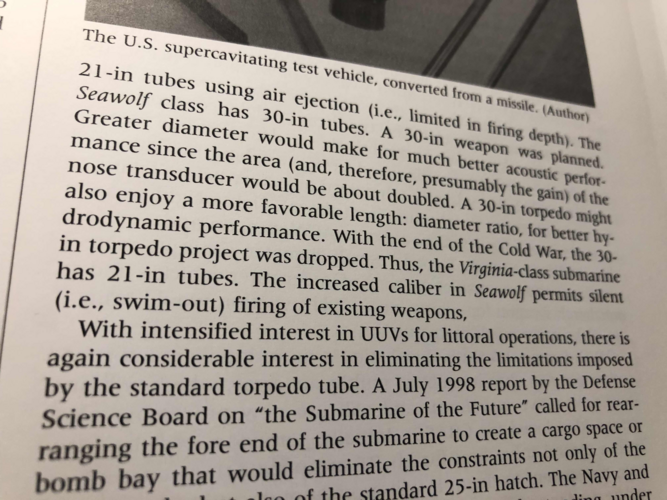So from i have been able to find, the seawolfs torpedo tubes are 26 in in diameter, slived down to 21 in to handle the navys regular torpedoes.
And I have also been able to find that there was a program to create 26 in torpedoes in the 80's but have been unable to find information or pictures of it. That could mean that the project didn't get far, or that it incoutered technical difficulties and gust faded away. I think its the former but I have been surprised before.
I think the project was canceled because the only use case was for torpedoes that could sink huge Soviet ships (ie the big nuclear carriers sense the mark 48 could deal with the kirov or the Kuznetsova gust fine as far as I'm aware) or for the supersonic fallow on for the harpoon wich of corse never happened.
And I have also been able to find that there was a program to create 26 in torpedoes in the 80's but have been unable to find information or pictures of it. That could mean that the project didn't get far, or that it incoutered technical difficulties and gust faded away. I think its the former but I have been surprised before.
I think the project was canceled because the only use case was for torpedoes that could sink huge Soviet ships (ie the big nuclear carriers sense the mark 48 could deal with the kirov or the Kuznetsova gust fine as far as I'm aware) or for the supersonic fallow on for the harpoon wich of corse never happened.

